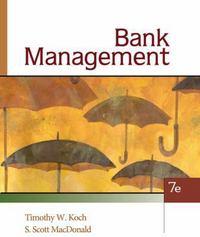Question
Q.1 What is the mechanism in the Solow model that generates growth (in short run)? Why does it fail to deliver economic growth in the
Q.1 What is the mechanism in the Solow model that generates growth (in short run)? Why does it fail to deliver economic growth in the long run?
Q.2 If changes in the climate, for example, led to more severe weather so that buildings and vehicles depreciated more quickly. Assuming the economy starts in its initial steady state, use the Solow model to explain : What happens to the economy over time and in the long run. Draw a graph showing how output evolves over time and explain what happens to economic growth over time.
Q.3 Consider a onetime change in government policy that immediately and permanently in- creases the level of the labor force in an economy (such as a more generous immigration policy). In particular, suppose it rises permanently from Li to Lf . Assuming the econ- omy starts in its initial steady state, use the Solow model to explain what happens to the economy over time and in the long run.
Q.4 Now suppose the parameters of the model take the following values: A0 = 100, l = 0.06, z = 1/3, 000, and L = 1, 000. a) What is the growth rate of output per person in this economy? b)What is the initial level of output per person? What is the level of output per person after 100 years? c) Now consider the following changes one at a time: a doubling of the initial stock of knowledge A0 , a doubling of the research share, l, a doubling of research productivity z, and a doubling of the population L . How would your answer to parts (a) and (b) change in each case?
Q.5 1
Consider a variant of Solow model we discussed in class. Let Yt = K 1 3 t (AtLt)2 3 Lt+1 = (1 + n)Lt At+1 = (1 + g)At This implies that labor and technology both grow over time. Everything else is same as before. a) What is the growth rate of output per person in this economy in the long run? b) Does this new setting change the main message of the Solow model ? Hint: This involves more algebra. In particular, you must divide everything by AL, unlike L before. Once you solve for steady state of K AL, you can comment about what happens to Y L , K L , C L , etc.
Step by Step Solution
There are 3 Steps involved in it
Step: 1

Get Instant Access to Expert-Tailored Solutions
See step-by-step solutions with expert insights and AI powered tools for academic success
Step: 2

Step: 3

Ace Your Homework with AI
Get the answers you need in no time with our AI-driven, step-by-step assistance
Get Started


